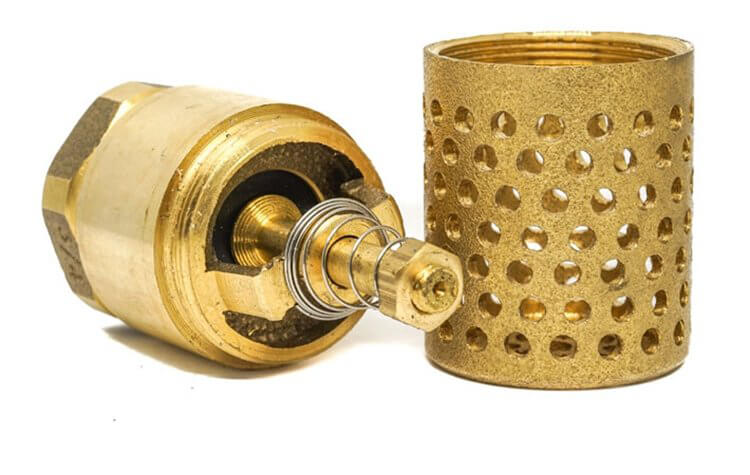© 2018 CMEC AQUA Valve Manufacturing Co.,LTD. All rights reserved. Site Map Link Designed by iwonder.cn

How does a vertical turbine pump keep its prime? Once the pump shuts off, doesn't gravity take over and run all the water back into the tank? In this post, learn how foot valves help pumps keep their prime and protect them from damage.
A foot valve is found at the end of a pipeline in a suction lift application. They function as a check valve, but they also have a strainer affixed to their open end.
The check valve is spring assisted. When the pump turns on, the pressure inside the pump column changes and the valve responds by opening. When the pump stops, the valve responds again by closing. This stops fluid from draining out of the pump column and causing the pump to lose prime every time it turns off.
The strainer also plays a critical role, keeping debris out of the pump. Multistage pumps, like vertical turbines, have tight tolerances. Even a small amount of debris can be detrimental to the pump's internals.
The strainer also keeps debris from becoming lodged in the foot valve. This would result in the valve being stuck in the open position, and all the fluid draining from the pump column. That nullifies the point of the foot valve! Some foot valves offer tight mesh, others offer a wider grid strainer. Customize the mesh size to your application.
I've used vertical turbines as an example here, but foot valves could be used on any pump in a suction lift application, such as foot valve for water pump.
Need help with a foot valve? Ask us about it! We gladly provide technical assistance to needed businesses from all over the world.